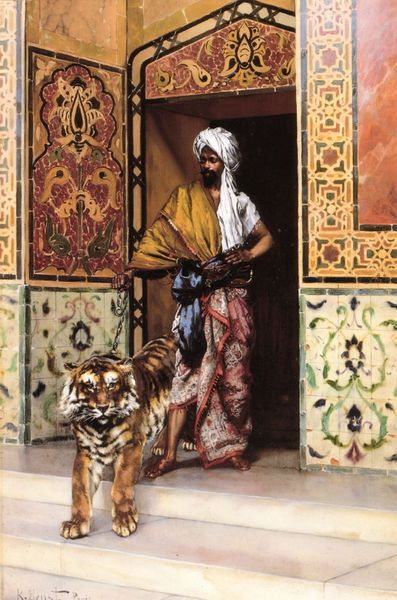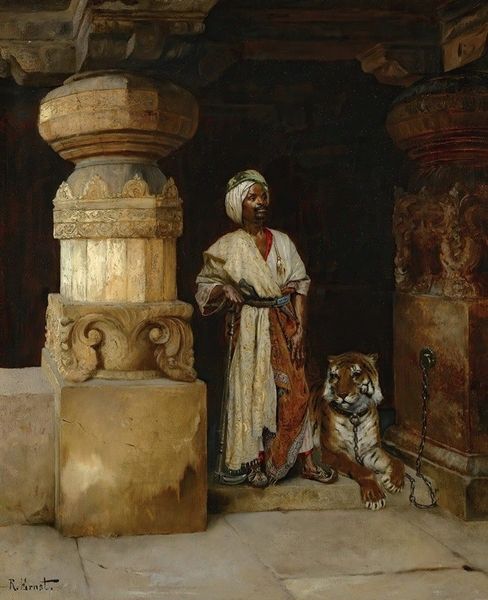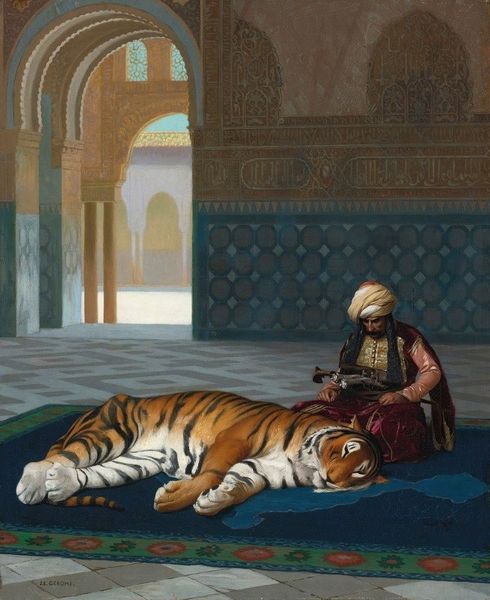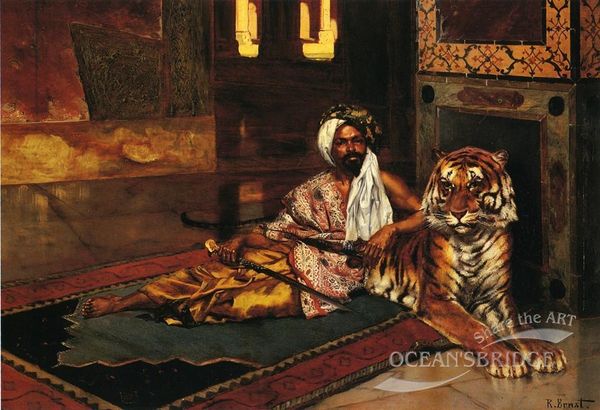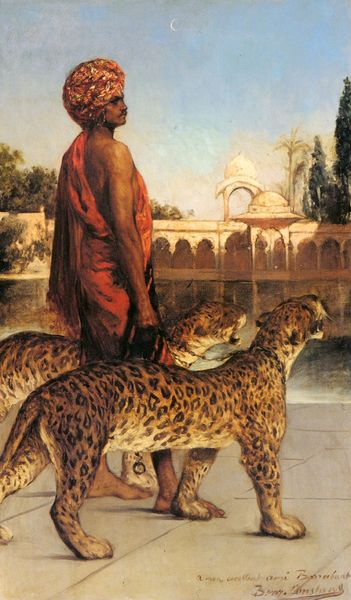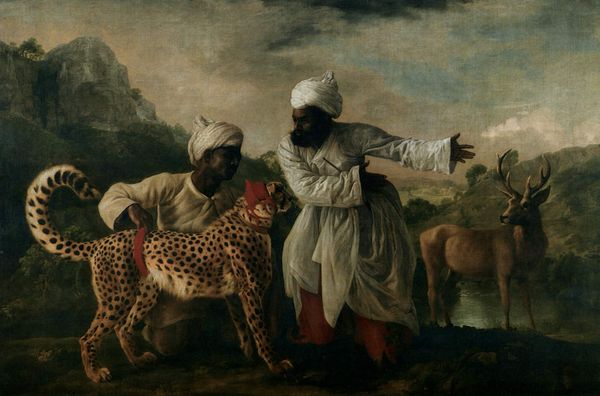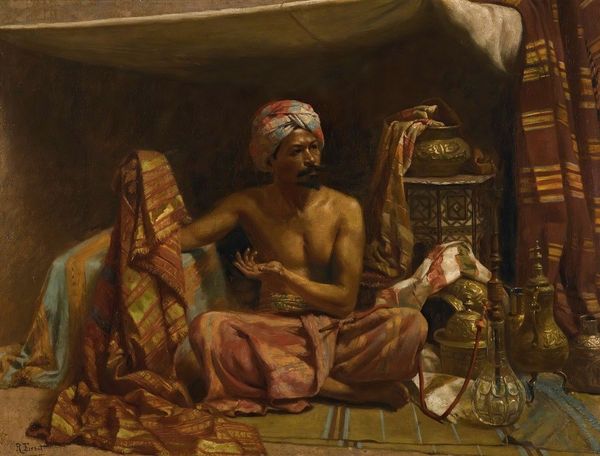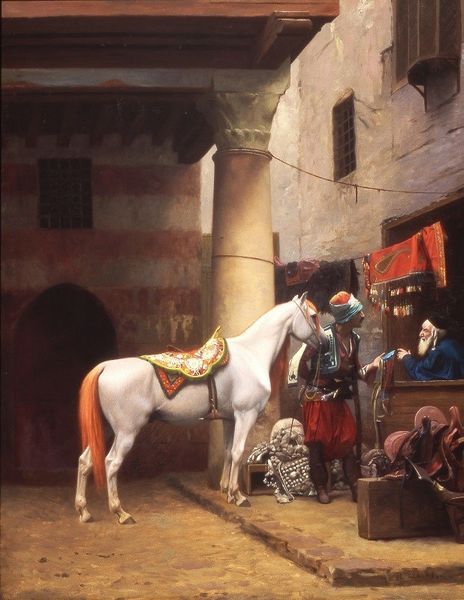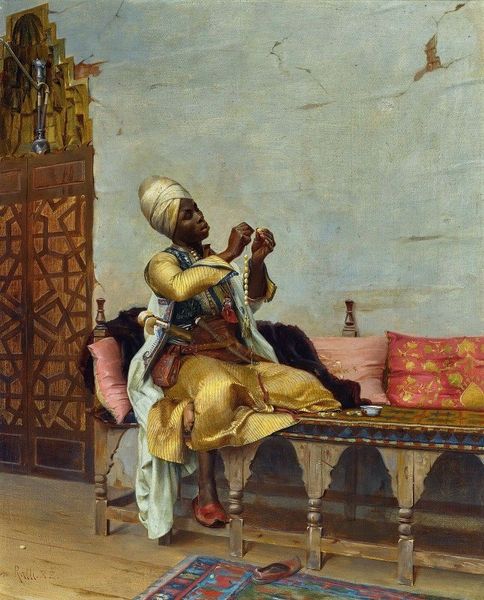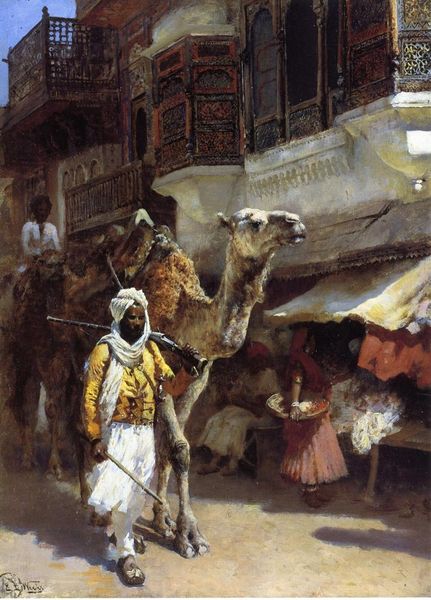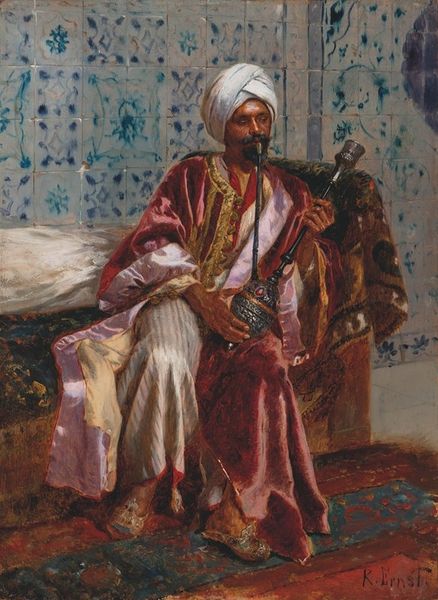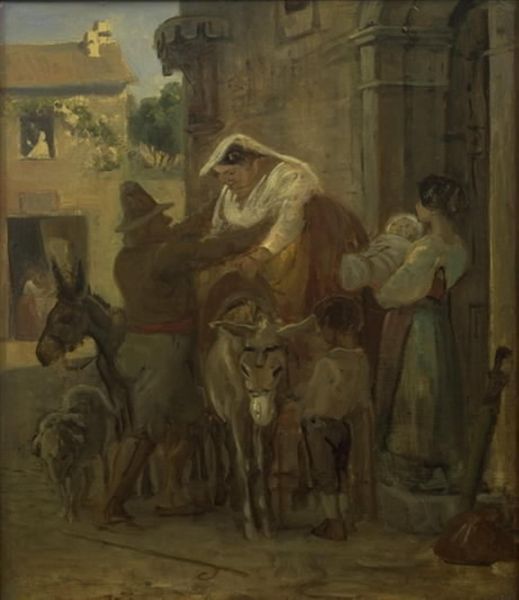
oil-paint
#
portrait
#
gouache
#
oil-paint
#
painted
#
oil painting
#
male-portraits
#
orientalism
#
genre-painting
#
academic-art
#
watercolor
#
realism
Dimensions: 61.5 x 50 cm
Copyright: Public domain
Editor: So, this is Jean-Léon Gérôme's "Pelt Merchant of Cairo," painted in 1869. He is shown amidst the stark surroundings with his tiger pelt, wearing an elaborate turban and draped with what appears to be a tiger skin. It strikes me as… a deliberate construction, very theatrical almost. What symbols stand out to you? Curator: The most immediate is the tiger pelt itself. Beyond its literal depiction of a trade good, what deeper resonances do you think it carries? In many cultures, the tiger symbolizes power, virility, and even royalty. What happens when such an imposing symbol is reduced to a commodity, a mere object of trade? Editor: It loses some of its aura, becomes more about wealth and status. Almost a trophy? Curator: Precisely! It speaks volumes about colonial power dynamics and the Western gaze on the Orient, doesn't it? Note also the helmet: what is it doing there, with the pelt merchant? What could its presence mean in relation to the tiger pelt? Editor: It feels like a deliberate contrast. One object signifies potential danger, a sort of brutal prowess. The other suggests militarism, some level of defense, right? Curator: Intriguing juxtaposition. Gérôme masterfully utilizes objects as cultural shorthand, layering meanings and inviting the viewer to interpret these symbolic relationships. The "Orient" was seen through such filters... How do you read that gaze? Editor: The subject seems almost staged for the viewer, but with an indifferent demeanor, right? I'm really noticing how staged and orientalist this depiction seems to be now. Curator: This brings a different perspective. Thank you for your comment!
Comments
No comments
Be the first to comment and join the conversation on the ultimate creative platform.
